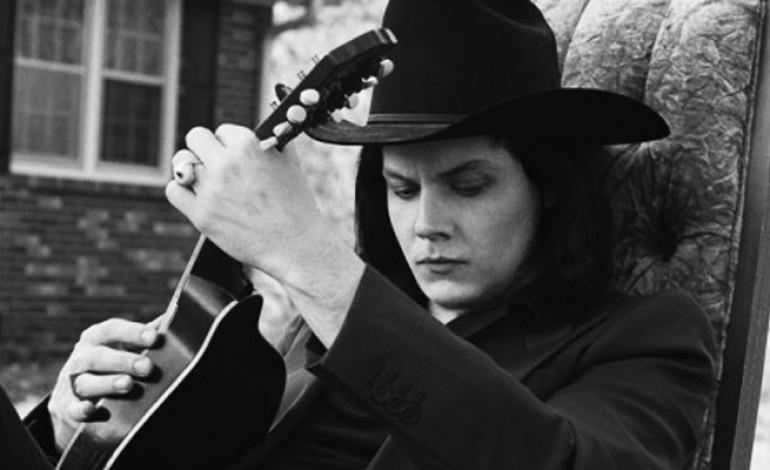I was raised on a slightly odd medley of classical music, jazz, folk, and Andrew Lloyd Weber musicals. I was a late bloomer when it came to popular music, and it wasn’t until I was 16 that I bought the first albums I could call my own, one of which was Elephant by The White Stripes. Their heavy blues origin made the transition an obvious one, if only in retrospect.
Jack White has held a pretty permanent spot in my listening habits ever since, and I feel that he is to me what Bowie is to others (not that I’m not a Bowie fan, he was merely absent from my earlier musical education and I had to be introduced to him in my early 20s). As with Bowie, White does so many diverse things with his music that one song can sound like a complete departure from the last, and yet if a song by him comes on I’ve never heard before, there’s something about it that marks it as his own.
This has only become more apparent since he started his solo career and developed more and more side projects. The White Stripes largely kept their songs simplistic; shorter songs, mostly under four minutes, picking a single theme and taking it for a walk. There was plenty of variation present (there’s a large distance between, for example, Fell in Love with a Girl and Ball and a Biscuit), but the two person band clearly put a few restrictions on his ideas. His solo music shows him stretching his musical muscles a little further, and being able to take advantage of a larger host of guest musicians. I saw him perform at Bonnaroo 2014 and he had an entire stage full of musicians to support him, adding new depth and breadth to the sound of even old songs.
With his first solo album, Blunderbuss, he takes the departure slowly—Sixteen Saltines definitely sounds like a slightly more produced White Stripes song, but within that album we start to hear what can be done with White’s mind applied to a larger band in the form of deeper layering and a fuller sound in songs like Freedom at 21 or I’m Shakin’. By the second album, Lazaretto, we start to see songs like High Ball Stepper [Instrumental], That Black Bat Licorice, and Lazaretto appear, which don’t just take the idea for a walk, but chat with a few friends along the way. The new wider sound doesn’t stop him from providing more emotional songs such as Love Interruption, or traditional blues story songs like Three Women or Want and Able.
White’s side projects are a fascination in their own right. The Raconteurs are best known for Steady, As She Goes, which is a shame, as it could be dismissed as slightly rocked up White Stripes. Their other songs keep to the shorter format, but blend White and Brendan Benson’s styles with elements of rocks and late era Beatles. If you’re not familiar with their other work, give Hands and Yellow Sun a listen and tell me if you think I’m wrong. The band has a genuine sweetness, bitter on some tracks and less so on others, that isn’t apparent in quite the same way in The White Stripes or White’s solo work.
My most recent exploration of White’s work has been The Dead Weather. I knew I Can’t Hear You for some time, but I finally obtained the album Sea of Cowards and was able to listen to the full range of what that collaboration has wrought. The base sound is very different to anything I’ve heard from White before, but still holds that note that tells you it’s him. The most notable differences are the inclusion of more electronic sounds that White has tended to shun in the past, a more intense layering of sound, and the departure from picking a single theme, as The Dead Weather are more prone to pick up one theme and then weave in others. I Can’t Hear You may actually be the most traditionally White track on the album, distinct from Jawbreaker with its notable electronic sounds, I’m Mad with White’s forced “ha-ha”s raising the hairs on the back of your neck, Die by the Drop which seems to draw influences from Nine Inch Nails, or The Difference Between Us with its more intense build of layered instruments and White playing backing vocalist to Alison Mosshart.
There is a risk that I may revisit White here (if more briefly) in the not too distant future, as I have the double vinyl of his release of acoustic recordings from 1998-2016 waiting in the other room. I’m just waiting to have a couple of hours free to listen to it properly.
If you’re a fan of Jack White, I’d recommend giving a listen to Royal Blood. They have a similar sound and I mistook them at first, but it’s too early to tell whether they’re cut from the same cloth or just emulating. We might see great things in the future.
A friend once told me that he didn’t like Jack White because he was too popular, which seemed very strange to me. He may have a huge following, but he’s not forgotten his blues roots. Standing in a crowd of 100,000 people at Bonnaroo, he still managed to make it feel like he was playing to 12 of us in a seedy bar somewhere in Michigan.
Enjoy my thoughts on music? Check out more with my posts on The Lumineers and Delain!


Pingback: Delain – Mark Collington